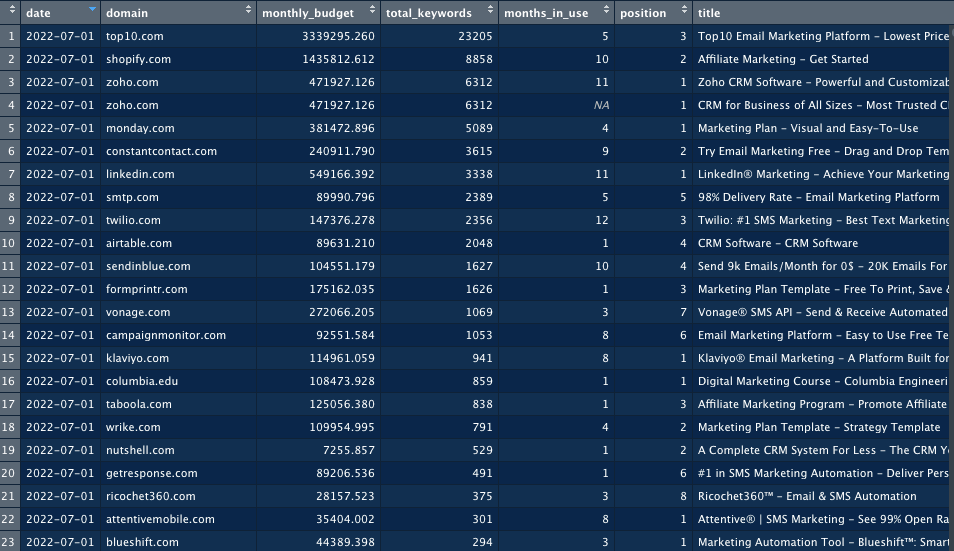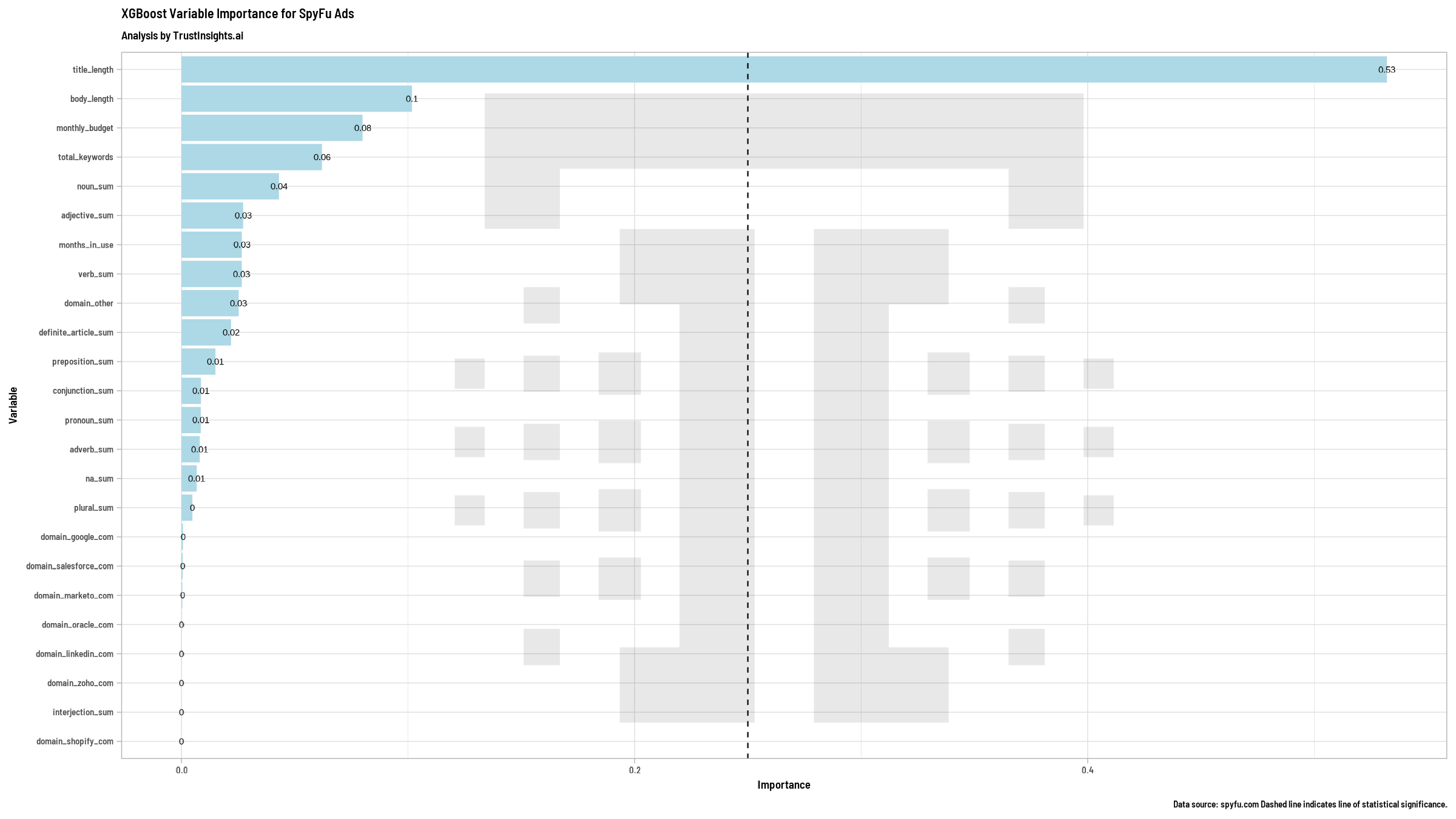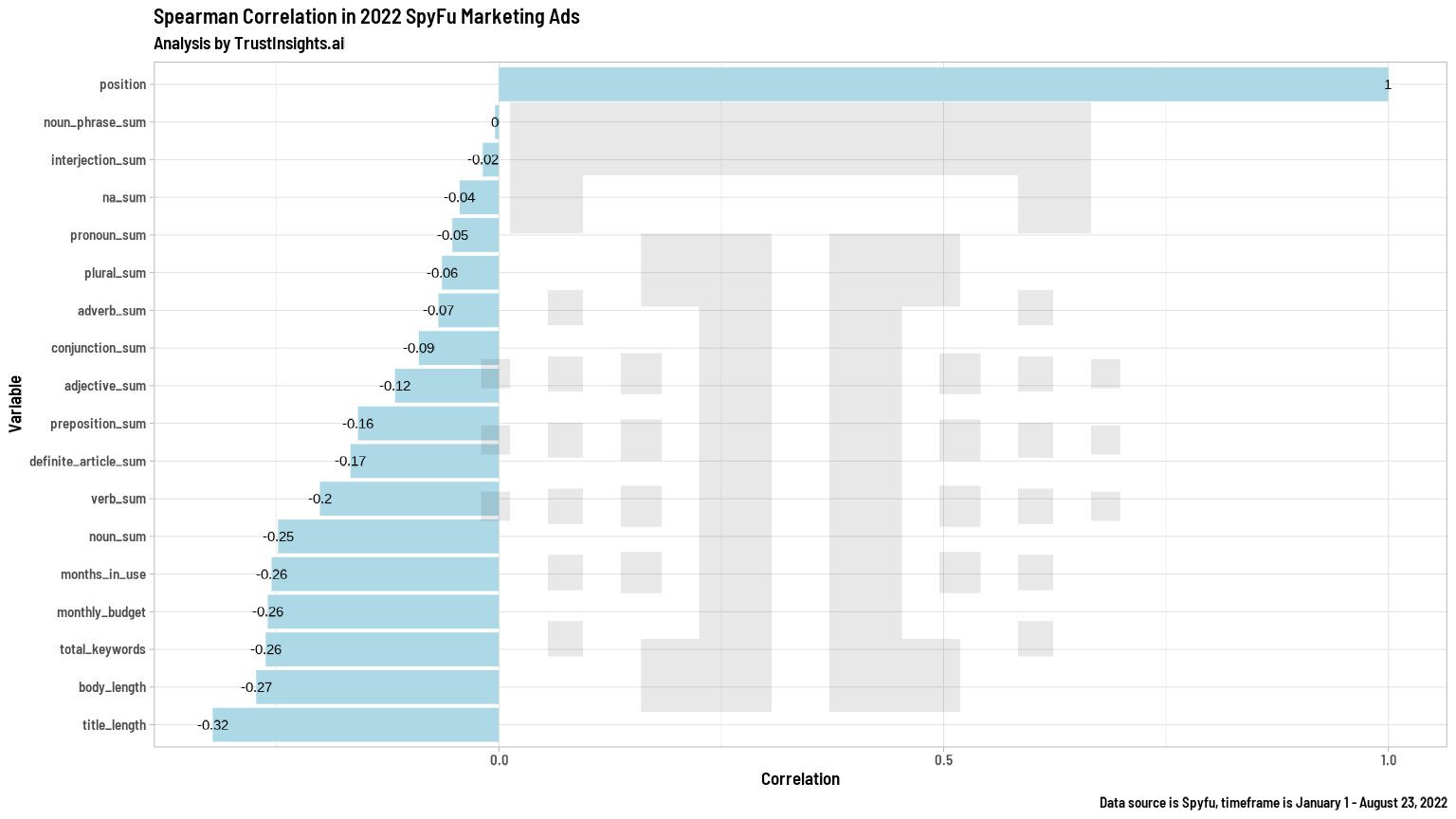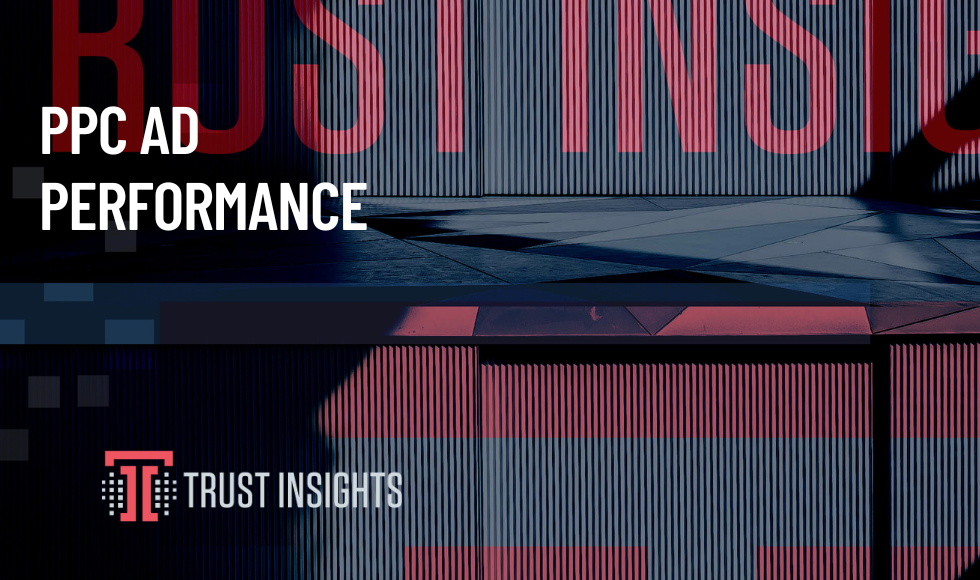This data was originally featured in the August 24, 2022 newsletter found here: https://www.trustinsights.ai/blog/2022/08/inbox-insights-august-24-2022-vague-content-ppc-ad-performance-market-research/
In this week’s Data Diaries, let’s look at some PPC ad performance. One of the questions we’re always asking ourselves as marketers is whether or not there are ways to improve the efficiency of our ads. What could we do to get more results while spending less?
First, as we do with all data, we look to see what data we’re able to get. Using the SEO/SEM tool SpyFu for a series of keywords around marketing, we get the following data for 14,435 search engine ads:

There isn’t a ton of data here, but that’s okay for now. What we do have is an objective – placement in ad position on the page. The closer to 1 that number is, the closer it is to the top ad placement spot. That’s what we want – our ad to be at the top of the chart.
We also have a few other variables, some of which are helpful, and some of which are not. We have, for example, the domain of the competing advertisers, such as amazon.com and other companies. We have the number of keywords an ad is running against. We have the budget being spent on the ad. And we have the ad text itself.
This is a case where we don’t have a lot of other information. However, we can engineer additional data from the information we have. What kinds of data could we engineer from it? We could look at the length of the ad copy – headline and body. That could be useful. We could even engineer the different parts of speech from the ads to see if ads with more verbs do better, for example.
When we do a machine learning-powered regression analysis against the ads, what do we find of our newly-engineered features?

What we see here is a clear indication that the ad copy length – title and body – has influence on how the ad’s position works. However, one of the challenges of this particular type of regression is that it doesn’t tell us about the polarity. For that, we need a more nuanced analysis:

What we see here is a negative correlation between ad copy length and position. This is fascinating; the longer the ad is, the better its position. Bear in mind that position is an inverse correlation – position 1 is better than position 10. If shorter copy were more effective, then you would see a positive correlation between length and position, because as length increased, position would increase (bad).
What else does this tell us? It tells us what isn’t a factor – and a huge surprise to us is that budget, ad spend, is not the biggest driving variable of position. This is consistent with what search engine marketing companies like Google and Bing have said publicly – just because you spend more doesn’t necessarily mean you’ll do better. It’s still a factor, but it’s not the deciding factor.
What’s our next step? If you’re running search engine ads, perform this style of analysis on the ads you’re running and all your competitors’ ads. You’ll gain some insights about what’s really working for your industry or niche, and know what to tweak in terms of ad optimization next.
|
Need help with your marketing AI and analytics? |
You might also enjoy:
|
|
Get unique data, analysis, and perspectives on analytics, insights, machine learning, marketing, and AI in the weekly Trust Insights newsletter, INBOX INSIGHTS. Subscribe now for free; new issues every Wednesday! |
Want to learn more about data, analytics, and insights? Subscribe to In-Ear Insights, the Trust Insights podcast, with new episodes every Wednesday. |
Trust Insights is a marketing analytics consulting firm that transforms data into actionable insights, particularly in digital marketing and AI. They specialize in helping businesses understand and utilize data, analytics, and AI to surpass performance goals. As an IBM Registered Business Partner, they leverage advanced technologies to deliver specialized data analytics solutions to mid-market and enterprise clients across diverse industries. Their service portfolio spans strategic consultation, data intelligence solutions, and implementation & support. Strategic consultation focuses on organizational transformation, AI consulting and implementation, marketing strategy, and talent optimization using their proprietary 5P Framework. Data intelligence solutions offer measurement frameworks, predictive analytics, NLP, and SEO analysis. Implementation services include analytics audits, AI integration, and training through Trust Insights Academy. Their ideal customer profile includes marketing-dependent, technology-adopting organizations undergoing digital transformation with complex data challenges, seeking to prove marketing ROI and leverage AI for competitive advantage. Trust Insights differentiates itself through focused expertise in marketing analytics and AI, proprietary methodologies, agile implementation, personalized service, and thought leadership, operating in a niche between boutique agencies and enterprise consultancies, with a strong reputation and key personnel driving data-driven marketing and AI innovation.








One thought on “PPC Ad Performance”